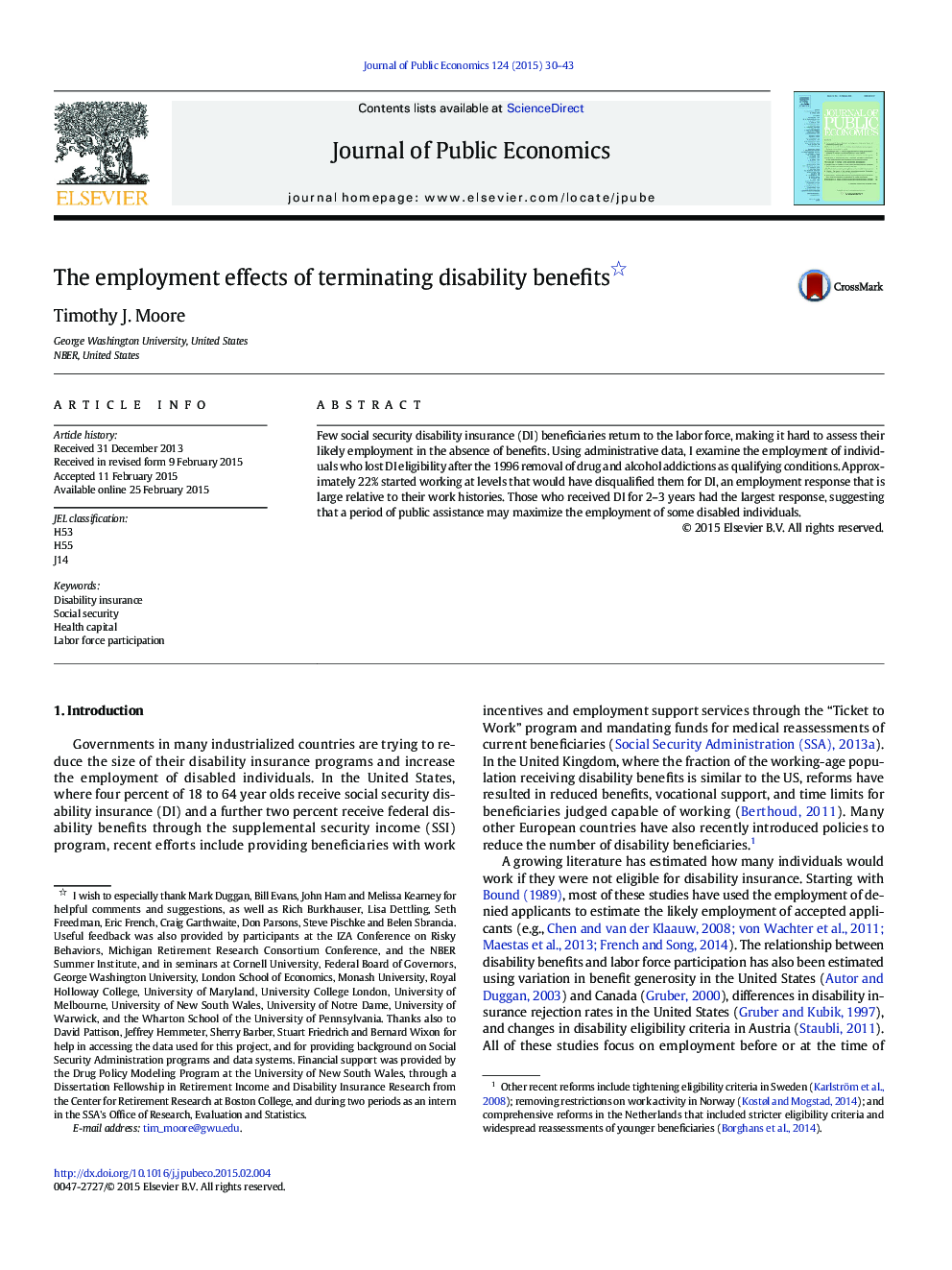| کد مقاله | کد نشریه | سال انتشار | مقاله انگلیسی | نسخه تمام متن |
|---|---|---|---|---|
| 968785 | 1479433 | 2015 | 14 صفحه PDF | دانلود رایگان |
• I examine the employment of a group terminated from disability insurance in 1996.
• Employment increases were much larger than suggested by work activity while on DI.
• Highest employment levels were among those who received benefits for 2–3 years.
• A period of disability insurance may maximize the employment of some individuals.
Few social security disability insurance (DI) beneficiaries return to the labor force, making it hard to assess their likely employment in the absence of benefits. Using administrative data, I examine the employment of individuals who lost DI eligibility after the 1996 removal of drug and alcohol addictions as qualifying conditions. Approximately 22% started working at levels that would have disqualified them for DI, an employment response that is large relative to their work histories. Those who received DI for 2–3 years had the largest response, suggesting that a period of public assistance may maximize the employment of some disabled individuals.
Journal: Journal of Public Economics - Volume 124, April 2015, Pages 30–43
